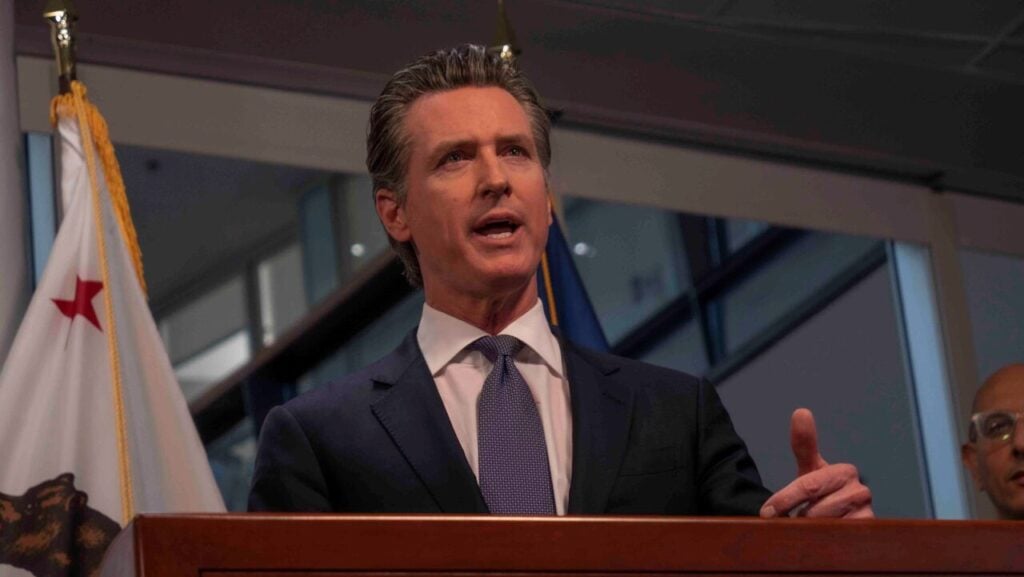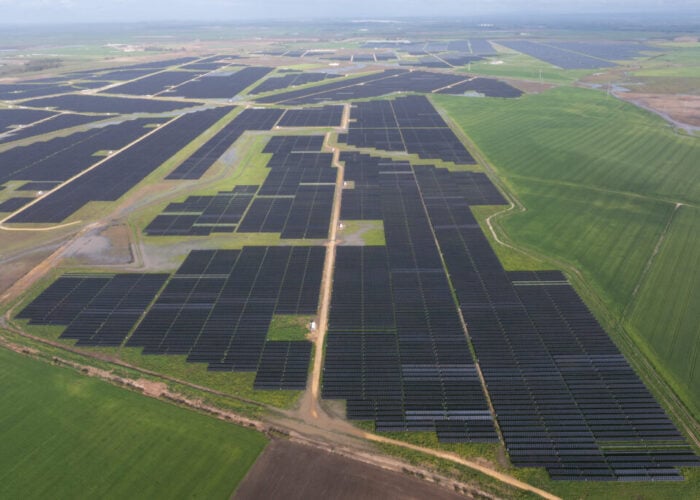
California governor Gavin Newsom has signed an executive order to accelerate the permitting of energy generation projects that could be set to lose Inflation Reduction Act (IRA) support, many of which are renewable power projects.
The executive order is a direct response to the Trump administration’s “One Big, Beautiful Bill” passed earlier this year. The bill shortened the timelines for which several clean energy projects are eligible to receive financial support through the IRA, and, in conjunction with tighter “start of construction” rules, is expected to lead to tens of gigawatts of planned solar capacity being lost.
Try Premium for just $1
- Full premium access for the first month at only $1
- Converts to an annual rate after 30 days unless cancelled
- Cancel anytime during the trial period
Premium Benefits
- Expert industry analysis and interviews
- Digital access to PV Tech Power journal
- Exclusive event discounts
Or get the full Premium subscription right away
Or continue reading this article for free
While Newsom’s order does not explicitly refer to solar projects, only calling on the California Public Utilities Commission (CPUC) to prioritise technology-adjacent “critical generation” projects, the scale of the Californian solar sector, and the fact that many renewable energy projects have been threatened by the withdrawal of IRA support, means it is likely renewables will benefit from this order.
The order instructs the state’s Energy Working Group – established by an earlier executive order – to “immediately identify” energy generation projects that are eligible for IRA tax credits but could lose these credits under the new federal policies, and “to support state agencies in taking all steps necessary and authorised by law to accelerate and prioritise all permitting [and] approval” of such projects.
The governor has also instructed the CPUC to “prioritise actions” that explicitly facilitate the faster connection of renewable energy generation projects and battery energy storage systems (BESS) “in the next three years”, tackling a long-standing issue with grid connection availability in the US. Figures from Berkely Lab found that almost four-fifths of all proposed energy projects withdrew from grid connection queues that prove an “obstacle to the timely processing of interconnection requests”.
The scale and maturity of the Californian solar sector mean this sector is likely to be the main beneficiary of this executive order. The US Solar Energy Industries Association (SEIA) notes that 52.3GW of solar capacity is in operation in the state, enough to meet over one-third of its total energy demand and expects a further 22.3GW of capacity to be added in the next five years, the second most in the US.
CCSA ‘applauds’ executive order
“State leadership on clean energy is more important than ever,” Stephanie Doyle, California state director for SEIA, told PV Tech, highlighting the role state governments can play in introducing policy support to replace policies that are being withdrawn on the federal level.
“The governor’s executive order sends a signal to state agencies on the need to move quickly to ensure utility scale projects meet the latest tax credit deadlines.”
The Coalition for Community Solar Access (CCSA) agreed with this assessment, saying it “applauds” Newsom’s executive order and describing it as a “call to action” that will help plug the policy gap left by the withdrawal of federal support for clean energy projects.
“Governor Newsom has made clear that California cannot afford to move slowly while federal incentives expire and energy demand continues to surge,” said CCSA western regional director Derek Chernow. “Governor Newsom’s executive order lays out a playbook for how California can maximise remaining federal credits, accelerate deployment and keep our climate goals on track.”
“The success of this initiative will depend on whether it includes large projects on commercial and institutional properties,” added Brad Heavner, executive director of the California Solar and Storage Association (CALSSA), who spoke to PV Tech last week.
“The utilities are notoriously slow at reviewing these projects, and customers risk losing federal tax benefits despite best efforts to complete projects before the deadline,” said Heavner.
The launch of the executive order coincides with SEIA releasing its own policy agenda to support the solar and storage industries across the US. The agenda calls for “policy actions at the local, state and federal level” and targets several areas that would benefit the US’ clean energy transition, including interconnection reform, echoing one of the aims of Newsom’s executive order.
“Enacting this agenda will help us meet skyrocketing demand for energy and keep energy prices down for families,” said SEIA president and CEO Abigail Ross Hopper. PV Tech has asked the association for further comments on Newsom’s executive order in particular.
Small-scale solar set for growth?
CCSA is one of several organisations, including advocacy group Vote Solar and the Union of Concerned Scientists, to have signed an open letter in response to the publication of the executive order, offering guidance on how its goals can be achieved.
These recommendations include an explicit reference to solar power in particular, which calls on the state to increase the value of community solar projects by incorporating their electricity output into grid supply and demand forecasts. Earlier this year, the US community solar sector attracted billions of dollars in private equity funding, and at a time where utility-scale PV investment is down – particularly in the US – there could be greater appetite for investment in the community solar sector.
Heavner also suggested that enabling larger projects to avoid the delays of “CAISO (California Independent System Operator) cluster studies” could be beneficial to accelerating deployment of distributed solar in the state.
“Another quick fix that would help leverage federal tax credits is increasing the size of projects that are not subject to the delays of CAISO cluster studies,” said Heavner. “Changing the threshold from 1MW to 5MW would clear the way for many commercial and industrial projects. This could include a fee based on an estimated cost share for grid upgrades.”
CCSA’s work comes at a time where there is increased pressure to commission more small-scale solar in California. This week, the California Solar & Storage Association (CALSSA) called for US$10 million in fines to be levied at local utilities Pacific Gas & Electric (PG&E) and Southern California Edison (SCE) for failing to approve residential solar and storage projects promptly, as interest grows in the small-scale solar sector.






